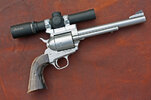Once upon a time forged was generally better but that was a time when we had less control over impurities, specifically sulfur and phosphorus in steels. Hot gorging doesn’t strengthen materials by work hardening, though proper cooling from the forging temperatures can, depending on the alloy. Cold forging provides considerable strength increases.
MIM is a sintering process but it’s more than that. For an idea of what can be done, look at all the high strength high wear powder metals used in dies and cutting tools.
Casting is nearly as old as forging and probably developed at the same time. It can be as good as you want. Highly stressed parts are cast for a number of applications.
Be careful when looking at fracture surfaces and making judgments on what happened. Without some history in the part and/or a lot of magnification, the appearance can be very deceiving and won’t tell you much.
MIM is a sintering process but it’s more than that. For an idea of what can be done, look at all the high strength high wear powder metals used in dies and cutting tools.
Casting is nearly as old as forging and probably developed at the same time. It can be as good as you want. Highly stressed parts are cast for a number of applications.
Be careful when looking at fracture surfaces and making judgments on what happened. Without some history in the part and/or a lot of magnification, the appearance can be very deceiving and won’t tell you much.



